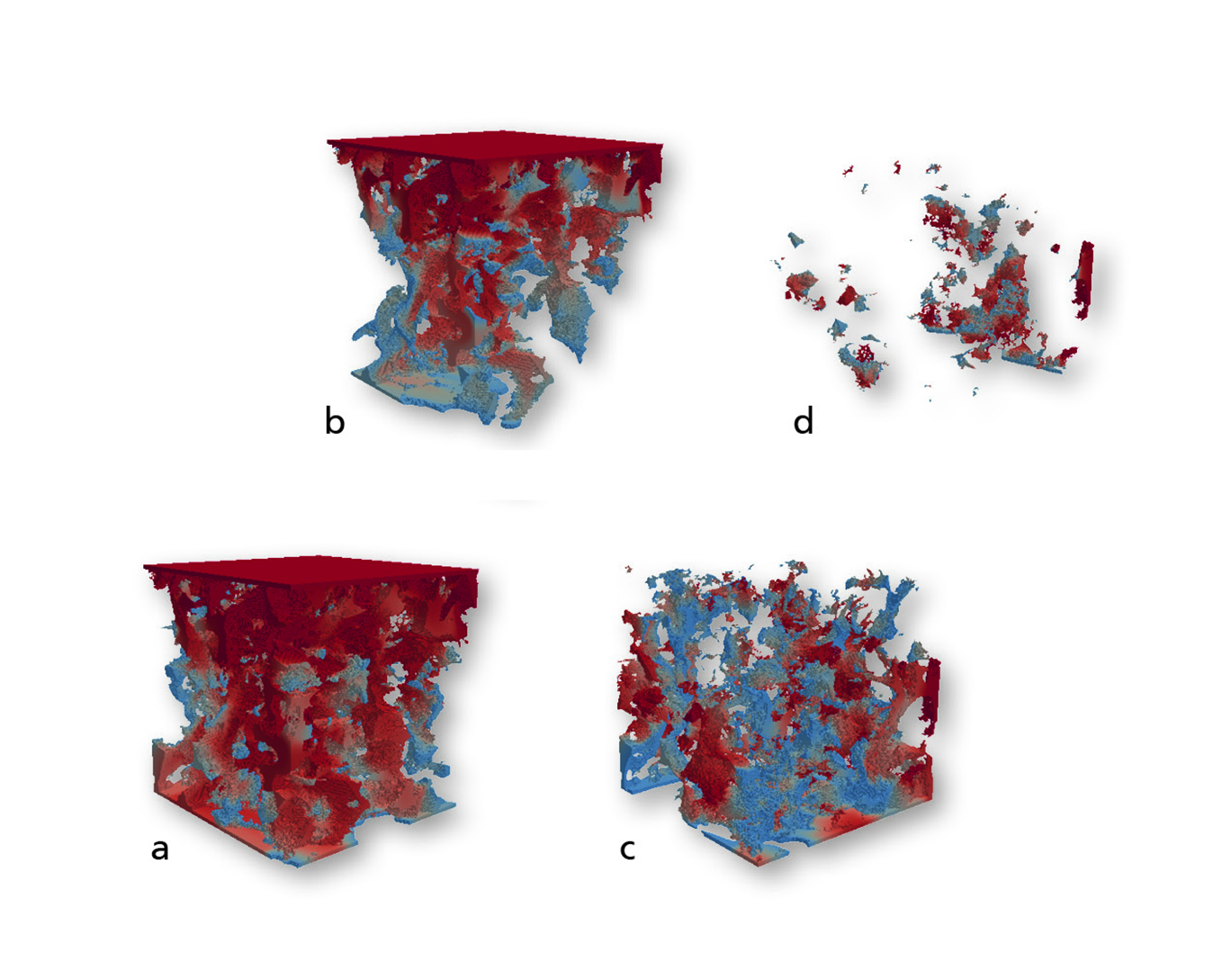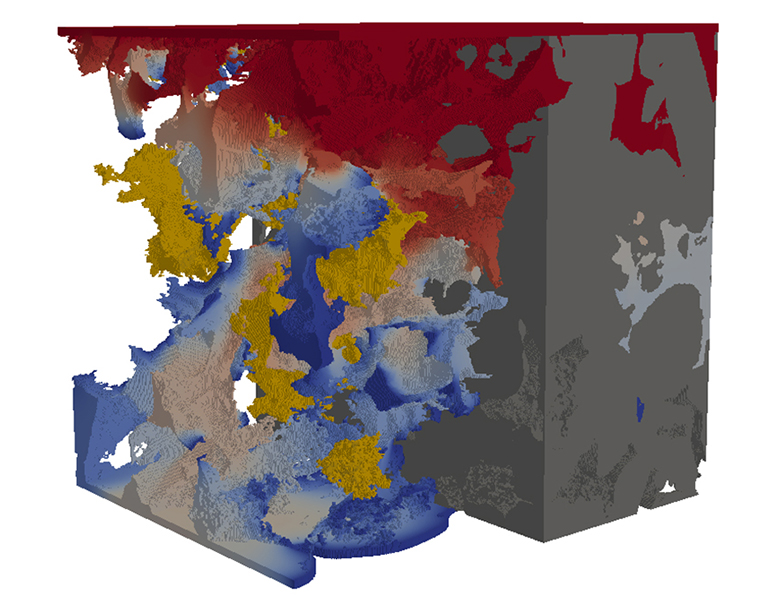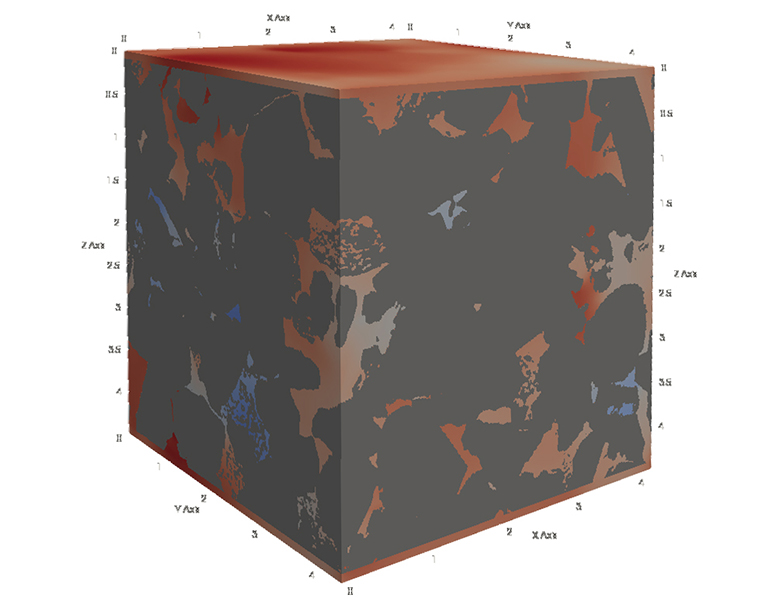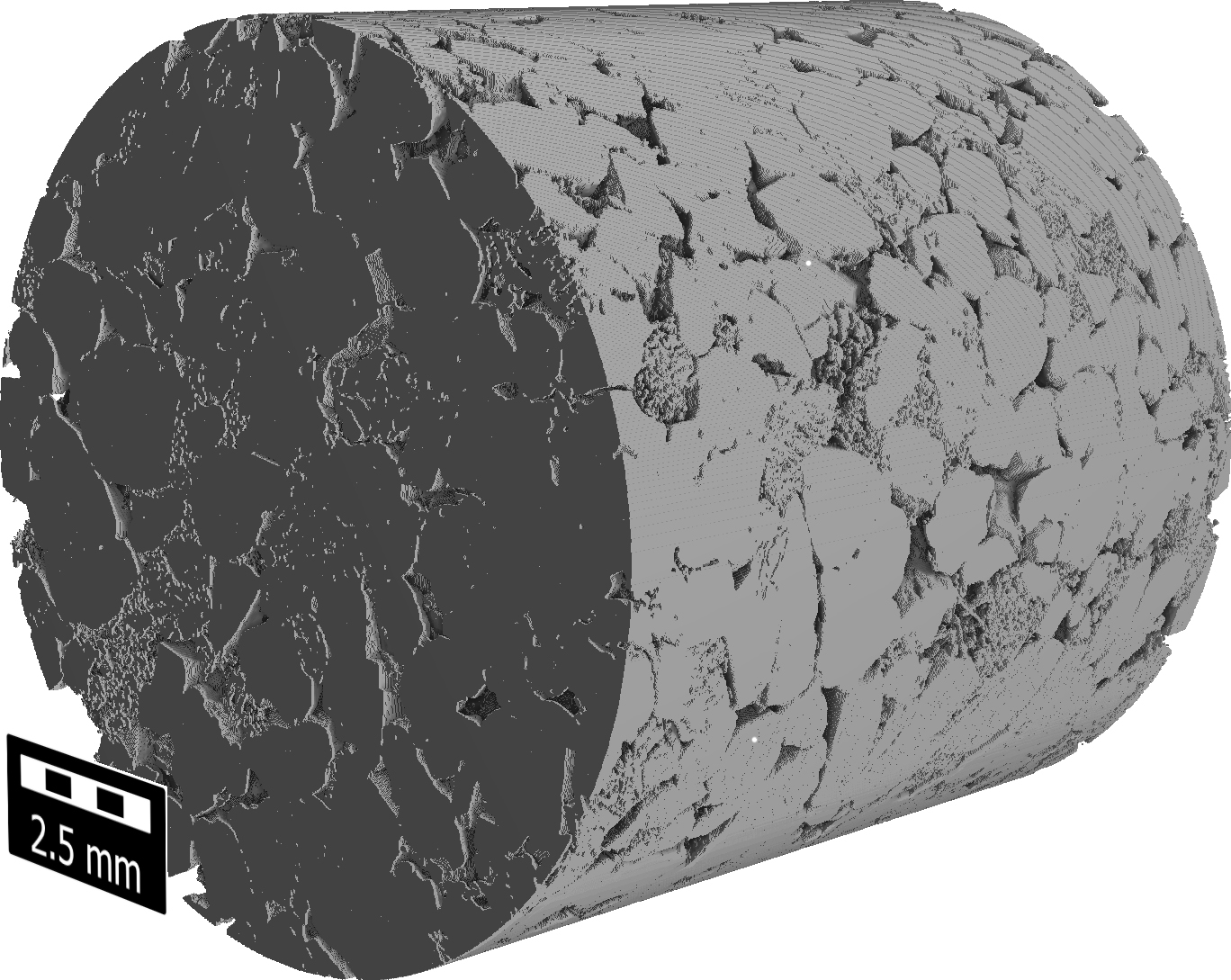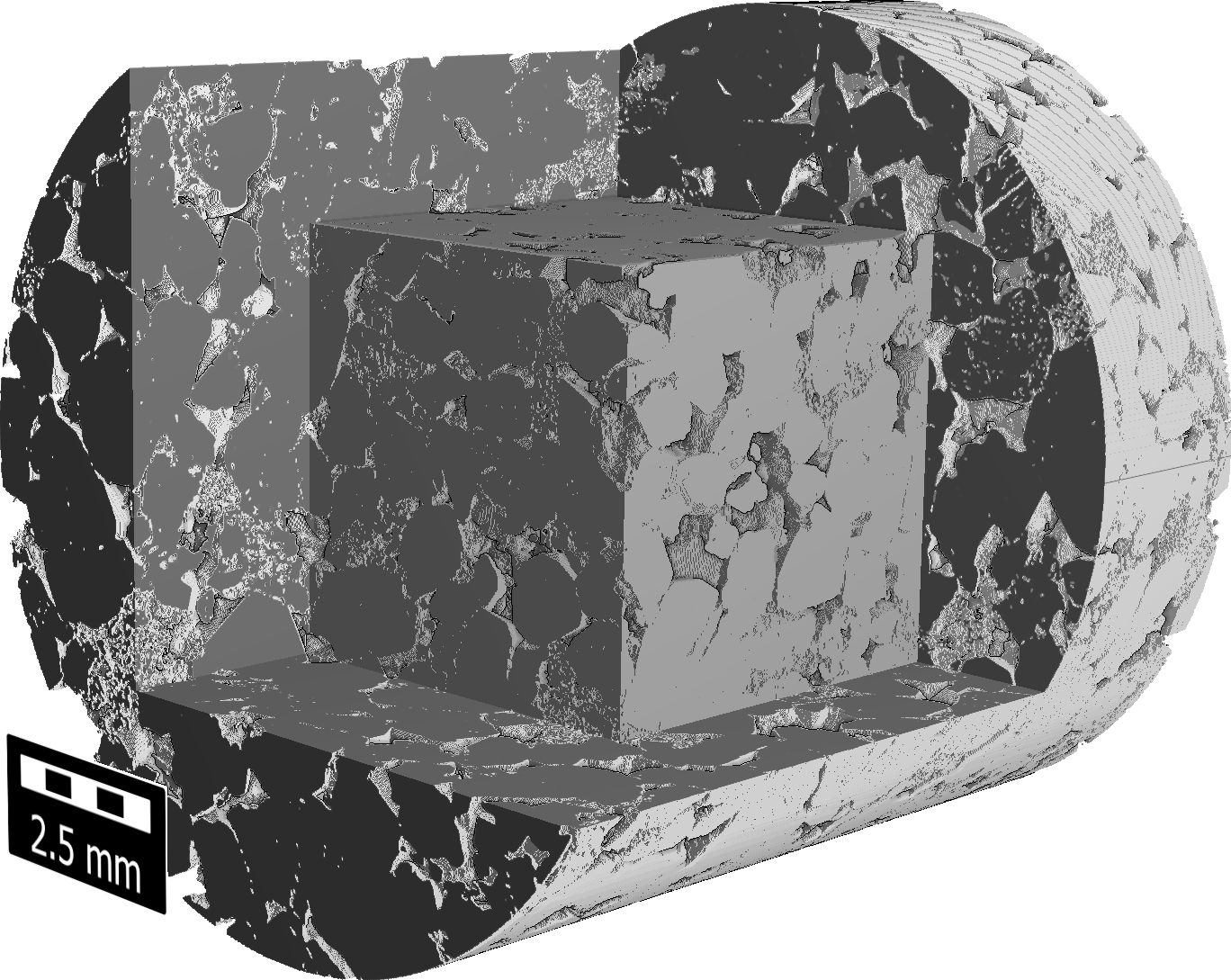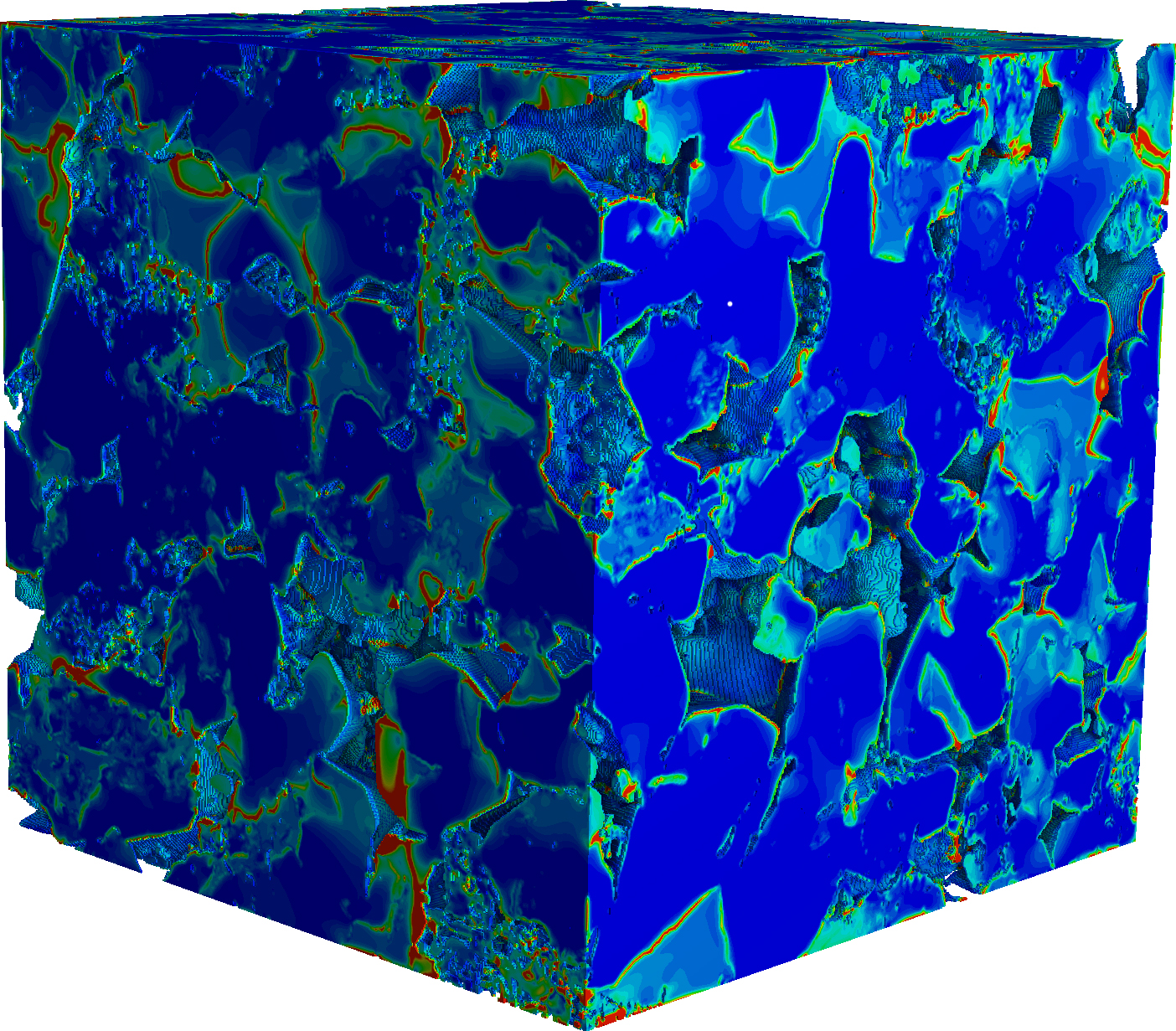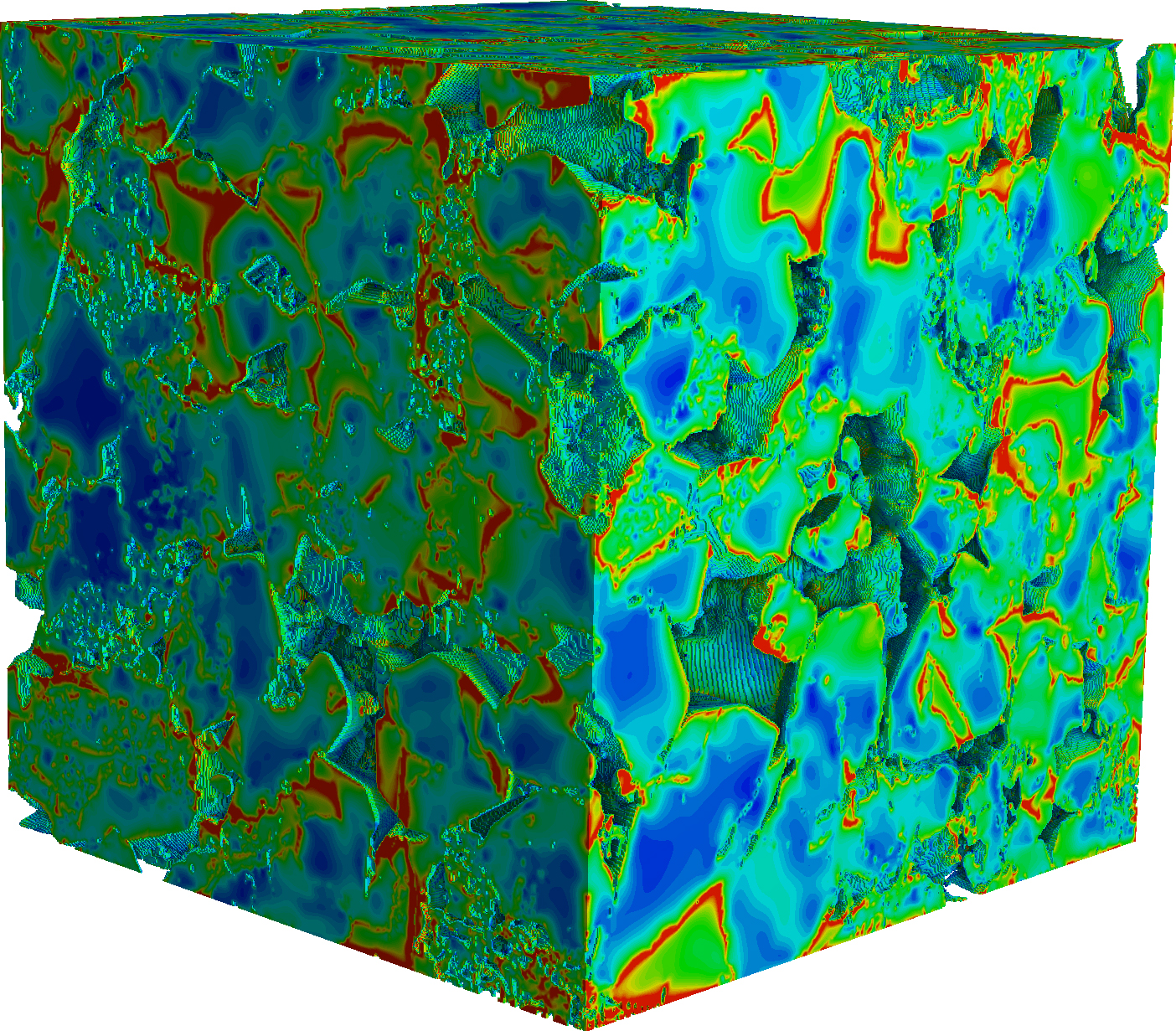Rocks are composed of individual minerals. Since dissolution and precipitation reactions cause changes in the flow resistance and thus of the transport of chemicals inside the rocks, the prediction of dissolution rates of these minerals is important for many geological applications – e.g. for oil recovery or carbon dioxide storage in rock formations. In the ResKin project (reaction kinetics in reservoir rocks), we are investigating the dissolution kinetics of minerals and their interaction with transport processes in rocks, in cooperation with our consortium partners.
ResKin – Simulation of Processes in Reservoir Rock
The dissolution rates, even of the same mineral, measured in experiments vary – depending on whether the measurements are done on the atomistic, pore- or plug scale – over up to two orders of magnitude, even under identical conditions. Four effects are widely accepted as likely causes for this variability:
- the influence of the hydrodynamics of the solvent containing fluids
- the chemical variability of the dissolving minerals
- the intrinsic kinetic variability of the dissolution process
- the mechanical stresses inside the rock
Developing a Multi-Scale Understanding of Reaction Kinetics
The ResKin project aims to study these effects and to develop a model that predicts the kinetics of chemical reactions in reservoir rock. To this end, we apply different modeling and simulation techniques on the corresponding scales:
On the atomistic scale (nm), Kinetic Monte-Carlo simulations are used to study the intrinsic kinetic variability of the dissolution process. On the pore scale (pore space and mineral microstructure, µm scale) our researchers conduct reactive transport simulations to study the hydrodynamic effects (Figure 1). On the plug scale (cm) we use macroscopic transport models that can be compared to experiments. Finally, we couple the different simulation techniques by means of mathematical multi-scale modelling.
Simulating With PoreChem and Making Predictions Possible
Using PoreChem, we already simulate the reactive transport of dissolved substances through a porous medium. Now, however, we need to simulate the complex chemical reactions in the porous rock – including the dissolution processes (Fig. 2), where the computational domain changes during the simulation. Therefore, we have extended our PoreChem software for this project. Additionally, our department developed innovative methods for the computation of transport parameters for macroscopic models on the plug scale by solving cell problems on the pore scale (Fig. 3). Thus our simulations make it possible to formulate and solve predictive models for dissolution processes in reservoir rocks.
FeelMath – Digital Simulation of Pore Pressure in Rocks
Computer simulations and image analysis provide us with new insights into processes taking place in the interior of rocks. In the ResKin project, we have expanded our FeelMath analysis tool and are investigating, among other things, fluctuations in pore pressure. This tool is used to calculate effective mechanical and thermal properties of microstructures, which are given by volume images or analytical descriptions.
Digital Rock Physics (DRP) as an Innovative Technology for Drill Core Analysis
Nowadays, the prediction of the nonlinear deformation of fluid saturated rocks is of great importance in many applications, e.g. fracking of rocks and geothermics. Digital rock physics (DRP) is an image-based workflow that allows estimation of physical rock properties by performing numerical simulations on 3D scans of rock samples. It represents an innovative technology to simulate rock properties, laboratory measurements can be replenished with DRP and it helps to gain new knowledge of complex physical processes within heterogeneous materials.
Simulations Taking Into Account the Fluid Pore Pressure
Traditionally, digitally rock physics mostly concentrates on the flow of oil and/or water through the pore space. In this project we have extended our micro-mechanical elasticity solver FeelMath to also take into account the pressure of liquid-filled pores on the rock matrix. This pressure is called pore pressure. Depending on the boundary conditions of the liquid-filled pore space, the poroelastic reaction is described
- as drained (the pore pressure does not increase)
- or undrained (the pore pressure increases because the liquid cannot escape from the rock sample)
In the latter case, the stiffness of the rock depends on the stiffness of the rock material and on the pressure of the fluid counteracting a compression of the drill core sample.
Project Partner:
- Coordination: Helmholtz Zentrum Dresden-Rossendorf (HZDR), Research Site Leipzig, Institute of Resource Ecology (Department of Reactive Transport)
- University of Bremen, MARUM - Center for Marine Environmental Sciences (Mineralogy)
- University of Greifswald, Institute for Geography and Geology (Economic Geology|Mineralogy)
- Fraunhofer Institute for Industrial Mathematics ITWM (Department Flow and Material Simulation)
- Karlsruhe Institute of Technology (KIT), Institute for Applied Geosciences (Engineering Geology)
- University of Mainz, Institute for Geosciences (Hydrogeochemistry)
Project Duration:
01.07.2017 until 30.06.2020

